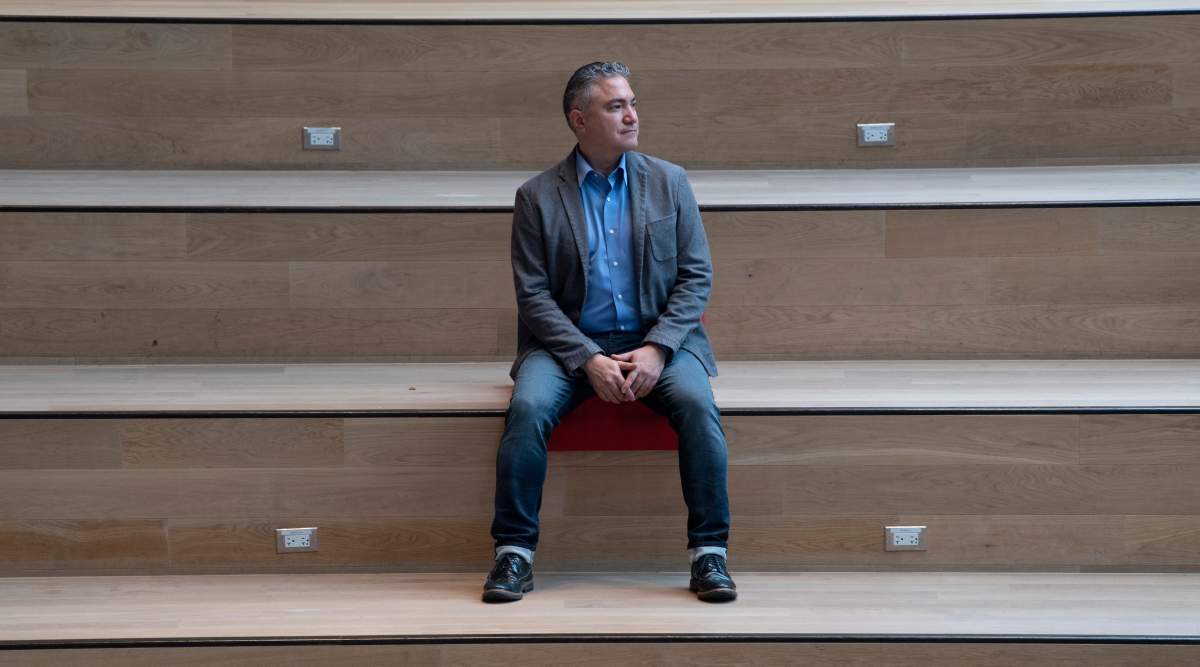Stage director Muriel Miguel is beaming as she shuffles among the cast members of the inaugural production in Ottawa’s new Indigenous Theatre.

Opening night, set for Sept. 11 at the National Arts Centre, is inching ever closer, and there’s a crackling energy in the air at this late-August rehearsal for “The Unnatural and Accidental Women.” It’s a mixture of budding anticipation, nervous jitters and perhaps even a little disbelief.

At 81 years old, Miguel insists she never thought she’d see the day a major performing arts centre put its resources behind a full season of programming from Indigenous creators, with plans for future seasons to follow. The NAC says Indigenous Theatre is the first of its kind in the world, meaning they will lead by example.
“It’s about time,” she said in a break from rehearsals.
A lot is riding on what happens over the coming months, and solidifying the Indigenous Theatre’s presence in the nation’s capital isn’t lost on Miguel.
“To make it so we succeed is really important,” she said.
“To make it so that we don’t succeed is the way it has always been.”
Throughout her career, Miguel has worked as a choreographer and actress in an industry that hasn’t committed much resources to telling Indigenous stories. She founded the Brooklyn-based performance troupe Spiderwoman Theater in 1976 as a space for Indigenous women to thrive on the stage, and it’s gone onto be the longest-running theatre company of its kind in North America.
So it seemed fitting that her experience offered the perspective needed to direct “The Unnatural and Accidental Women,” a provocative play written by Metis-Dene playwright Marie Clements two decades ago. The story, set in Vancouver’s Downtown Eastside, looks at the impact on families of missing and murdered Indigenous women and girls.
Following a national inquiry into the tragedy of missing and murdered Indigenous women and girls, and the release of a final report earlier this year, it seemed like the appropriate time to revisit Clements’ work, said Kevin Loring, the Indigenous Theatre’s artistic director.
“Marie was writing about this issue long before it was a national headline,” he said.

Get breaking National news
“In a season that celebrates Indigenous women you couldn’t ask for a stronger piece.”

Loring, a Governor General Award-winning playwright and actor himself, picked Miguel as the director shortly after he was hired two years ago to bring a bold vision of Indigenous programming to the stage.
She’s twice played Aunt Shadie, one of the murdered women, in past versions of the play. She’s intricately familiar with the characters and what she says is the importance of balancing the darkness of the victims’ experience with some light and humorous dialogue.
“We have to talk about the spirits, we have to talk about how killing women really relates to the families,” she says.
She adds: “But if you work with Indigenous people, it has to be funny.”
The programming has to connect with an Indigenous audience, but the theatre’s longevity also depends on how it appeals to the masses.
While its inaugural September-to-May season is certain to attract many curious theatregoers, its sustainability comes down to an untested commercial market.
Will the same subscribers who buy season passes for Shakespeare, Broadway hits and popular ballets consider putting down money for regular Indigenous theatre? Will the program draw in newcomers who wouldn’t otherwise go to the NAC? In both cases, Loring is confident the answer is yes.
“Any audience that comes will be totally thrilled and awed. I think the work will speak for itself,” he says.
“Something that we fundamentally need in our society is to hear these voices.”

Stories will also be presented in English, French and more than 10 Indigenous languages, and of the 11 productions in the 2019-2020 season, nine are written and created by women.
There are masked dancers from British Columbia, Iqaluit musicians and circus artists and a dreamy puppetry spectacle.
Loring’s own award-winning production “La ou le sang se mele / Where the Blood Mixes,” about the ripple effects of trauma from residential schools, will be presented in both French and English versions.
The NAC has committed to access for Indigenous audiences by offering $15 tickets to “all self-identifying members of the Indigenous community” throughout the entire season.

Certain shows will also include “culturally appropriate spiritual and emotional supports” on the premises.
So it’s little surprise that organizers are ushering in this first season with some major fanfare.
Coinciding with the launch is Moshkamo, an Indigenous arts and community festival of workshops, exhibits, and culinary events. The festival runs from Sept. 11 to 29, and is part of the NAC’s effort to boost the profile of what’s happening inside the theatre while showcasing other creators.
As part of the event, some of the country’s most celebrated Indigenous musicians are booked for concerts, including Buffy Sainte-Marie (Sept. 15), Susan Aglukark and the NAC Orchestra (Sept. 20) and Jeremy Dutcher (Sept. 25).
But it’s hard to ignore that even in this celebratory moment, the NAC’s Indigenous Theatre carries a huge question mark on its future.
Earlier this year, the federal government turned down a request for $3.5 million of funding that would’ve supported future seasons. That’s forced the Indigenous Theatre to explore the possibility of seeking more corporate sponsors.
For his part, Loring said he’s letting others at the NAC worry about ticket sales while he focuses on the bigger picture of opening people’s eyes to new possibilities.
“Art can shed light on issues that are difficult in a really powerful way that reaches beyond your intellect,” he said.
“Stories reach us in our hearts, and that’s how we change minds.”









Comments